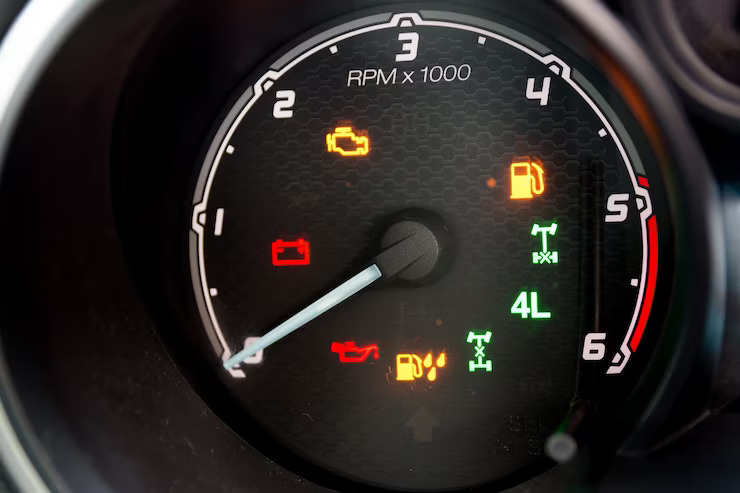The low oil level warning light is an important feature in modern vehicles that alerts drivers when the engine oil level is critically low. It serves as a reminder to check and maintain proper oil levels, which are vital for the health and performance of the engine. In this article, we will discuss the significance of low oil level warning lights, the importance of maintaining optimal oil levels, and the steps to ensure your engine stays healthy.
Understanding the Low Oil Level Warning Light: The low oil level warning light is typically located on the dashboard and is designed to monitor the engine’s oil level. When the oil level drops below a safe threshold, the warning light illuminates, indicating that it’s time to take action. Ignoring this warning can lead to serious engine damage and costly repairs.
Importance of Maintaining Optimal Oil Levels: Engine oil plays a crucial role in lubricating the various moving parts within the engine, reducing friction and heat. It also helps to remove contaminants, prevent corrosion, and maintain a proper seal between the piston rings and cylinder walls. Adequate oil levels are necessary to ensure smooth engine operation and prevent excessive wear and tear. By maintaining optimal oil levels, you can:
- Prevent Engine Damage: Insufficient oil levels can lead to increased friction and heat, which can cause components to wear out prematurely. This can result in engine damage, decreased performance, and even complete engine failure.
- Improve Fuel Efficiency: Properly lubricated engine parts experience less resistance, resulting in improved fuel efficiency. With lower levels of friction, the engine operates more smoothly, allowing it to perform at its best.
- Enhance Engine Performance: Well-lubricated engine components work in harmony, resulting in improved overall engine performance. This includes better acceleration, smoother operation, and reduced noise and vibration.
Steps to Ensure Engine Health:
- Regularly Check Oil Levels: Make it a habit to check your vehicle’s oil levels regularly, especially before long trips or after extended periods of driving. Consult your vehicle’s manual to locate the dipstick and follow the manufacturer’s guidelines for checking oil levels.
- Add Oil When Necessary: If the oil level is below the recommended range, add the appropriate type and amount of oil as specified in your vehicle’s manual. Be careful not to overfill, as this can also cause issues. It’s best to add oil gradually and recheck the level to avoid overfilling.
- Monitor Oil Quality: In addition to checking oil levels, pay attention to the oil’s color and consistency. Dark, dirty oil may indicate the need for an oil change. If the oil appears milky or foamy, it could be a sign of coolant contamination, which should be addressed immediately.
- Follow Recommended Oil Change Intervals: Regularly change your engine oil according to the manufacturer’s recommendations. This ensures that the engine is always running on clean, fresh oil, maintaining optimal lubrication and protection.
- Address Leaks or Excessive Consumption: If you notice persistent oil leaks or excessive oil consumption, have your vehicle inspected by a qualified mechanic. Leaks can lead to low oil levels, while excessive consumption may indicate underlying engine issues that need attention.
- Respond to the Warning Light: If the low oil level warning light illuminates on your dashboard, do not ignore it. Pull over safely, check the oil level, and add oil if needed. If the light persists, seek professional assistance to diagnose and address any potential problems.
By paying attention to the low oil level warning light and maintaining proper oil levels, you can ensure the longevity and optimal performance of your engine. Regular oil checks, timely oil changes, and addressing any issues promptly will keep your engine running smoothly and help you avoid costly repairs down the line. Remember, the engine is the heart of your vehicle, and proper oil maintenance is key to keeping it healthy.











